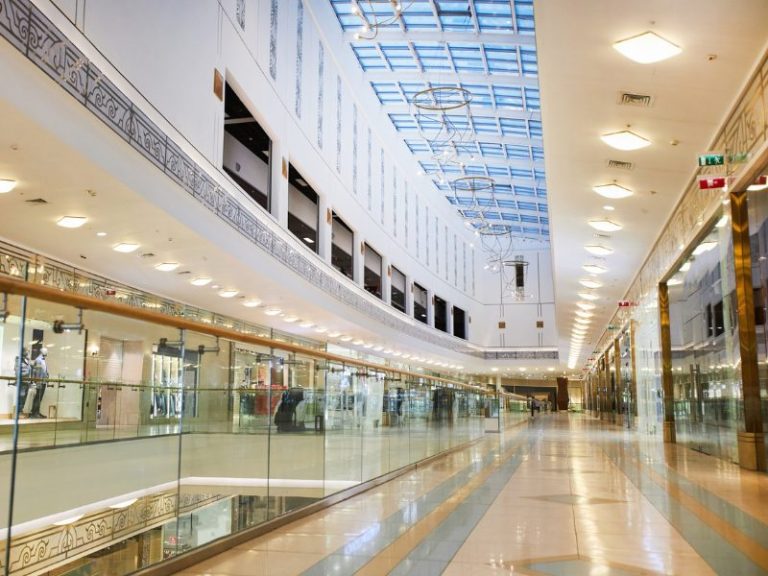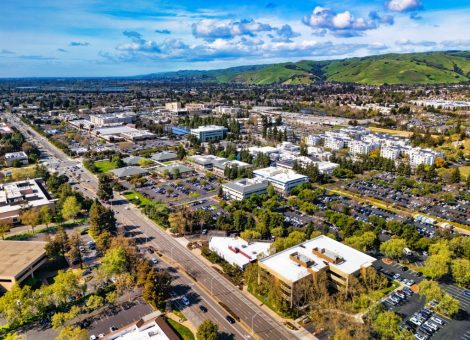What's a mall tenant to do?

There has been significant press coverage over the past five years regarding the decline of regional shopping centers in the United States. One major factor driving this decline is the decreasing number of department store anchors. This trend began in 2010, when Kmart Holdings’ acquisition of Sears failed to improve Sears’ fortunes. Sears stores plummeted from 3,500 in 2010 to fewer than 700 by 2017, resulting in hundreds of regional malls losing a key anchor tenant. Sears isn’t the only contributor to these mall challenges – since early 2020, JCPenney, Macy’s, and Dillard’s have collectively closed 310 stores, most of which were regional mall anchor tenants.
Those department store declines are far from over
As part of their “Bold New Chapter” announced in February 2024, Macy’s revealed plans to close 150 stores, including 100 in 2025 and 2026. This follows their Polaris strategy from February 2020, which called for closing approximately 125 department stores (notably, each of Macy’s “strategic plans” consistently involves store reductions). JCPenney’s approach to store closures has been more conservative – in February 2025, they announced the closure of just 8 stores by mid-2025. This restraint may be explained by the fact that Simon and Brookfield, two major mall owners, are part-owners of Catalyst Brands (JCPenney’s parent company) and are understandably reluctant to close stores that would negatively impact the performance and occupancy levels of their mall properties.
The most recent announcement comes from Forever 21, which filed for Chapter 11 bankruptcy in March 2025. Although Forever 21 is seeking a buyer for some properties, current speculation suggests all 357 stores will close. While not a true anchor tenant, Forever 21 operates relatively large stores—the 97 retail sites listed by RCS Real Estate as of this writing average 22,600 square feet, with two locations (Galleria at Tyler and The Shops at Santa Anita) exceeding 100,000 square feet each.
In fairness, some anchor tenants are continuing to expand, though they are rare exceptions. Dick’s Sporting Goods plans to open 15 large-format House of Sport stores in 2025, with aims to reach 75 to 100 locations by 2027. Macy’s is committed to opening more “Market by Macy’s” stores, but their relatively small size generates much less foot traffic than traditional department store anchors.
Most coverage of the regional mall industry’s struggles has focused on the malls themselves, highlighting redevelopment efforts or mall closures and demolitions. Numerous articles have documented the diverse uses for vacant department stores—including libraries, churches, healthcare facilities, supermarkets, apartment complexes, call centers, and co-working spaces. However, while these tenants help generate rental income, they typically don’t provide the retail attractiveness and customer synergy that department stores once offered.
Which brings us around to the point of this blog – what’s an ancillary mall tenant to do? Most mall tenants, including apparel stores, shoe stores, jewelry stores, cosmetic stores, and others, have relied on mall traffic, much of which has been generated by department store anchors, to bring consumers into their stores. As the department store anchors in a mall disappear one by one, what options do smaller tenants have?
Options for smaller mall tenants
There are several ways in which smaller tenants can respond to declining mall traffic in their regional malls:
Stay put
Even as overall mall traffic declines, there may still be active enough to keep ancillary tenants profitable. For many tenants, the best near-term course of action may be to stand pat until declining sales and profitability force a move. In addition, tenants may be able to negotiate lower rental rates concurrent with staying put. Some tenants are thriving despite having most of their locations in malls. Abercrombie, but whose brands include Abercrombie & Fitch, Abercrombie Kids, Hollister, and Gilly Hicks, has most of their stores located in malls, nevertheless experienced very strong comp sales growth of +14% in fiscal year 2024. However, this is definitely not the case for many tenants.
Relocate within the mall
If a tenant is positioned in a “dead wing”, they can relocate to a more active part of the mall with stronger tenants. However, if the mall continues to decline, this will only be a short-term solution.
Relocate to a nearby strip center
Small tenants can relocate their mall stores to a nearby lifestyle center, power center, or strip center to continue to serve an in-profile trade area. However, there are several challenges with this approach:
- Customer traffic – other shopping center types typically don’t generate the same level of customer traffic that regional malls do. As a result, unless the tenant in question is a strong draw in their own right, most such relocations will result in a loss of sales. (In fairness, the corresponding reduction in rent may result in a net increase in profitability).
- Shopping center layout – small tenants can get lost in a power center with large anchor tenants. A power center anchored by Costco, Home Depot, and Target may generate strong sales, but the configuration of the center and size of the anchor tenants often make it unlikely that customers will walk from an anchor tenant to a smaller ancillary tenant.
- Customer outreach – if a mall tenant decides to relocate, the mall operator will typically not allow them to put “Store Relocation” signs in the store while it is in operation. As such, customers who return to a mall once a store has relocated may not be aware of the new location. If the tenant has a strong CRM system that includes contact information for most customers, aggressive marketing can be used to bring them to the new site – if not, they can anticipate a discernible loss of traffic.
Many mall tenants, including Signet Jewelers (Kay and Zales) and Genesco (Journey’s and Johnston and Murphy) have been successfully relocating stores out of dying malls into nearby strip and lifestyle centers. We anticipate that this trend will continue for most B and C class malls.
Close
Small tenants can simply decide to close stores once a regional mall loses enough customer traffic. This may result in a net gain in profitability for the retailer – net sales and profit gains in surrounding stores and e-commerce sites may outpace the profitability (or lack thereof) of the closed store.
Shop-in-shop
Smaller tenants can decide to locate inside larger operators, and rely on the parent retailer traffic to drive sales. Current examples of this include Starbucks restaurants inside Target and supermarkets, Sephora kiosks inside Kohl’s, and Ulta and Warby Parker kiosks inside Target.
However, this approach has the same challenges that a regional mall deployment strategy does – if the parent store falters, the shop-in-shop will be impacted as well. What’s more, rather than relying on multiple operators to provide customer traffic in a regional mall, the shop-in-shop is dependent on a single player. Look no further than Sephora’s decision to abandon JCPenney locations in favor of Kohl’s locations – the ~600 shop-in-shop locations that Sephora operated in JCPenney stores in 2022 are now closed. Sephora has replaced JCPenney with Kohl’s as a parent store, but there is an obvious cost and disruption concurrent with the transition.
Successful location factors
One common theme resonates through all these potential solutions – a comprehensive understanding of the factors that drive successful store performance. In particular:
- Customer profile – what are the demographic and psychographic characteristics of those customers who have the highest propensity to shop a given retailer? This is particularly important when relocating a store out of a regional mall (ensuring that the replacement center’s trade area characteristics are in profile) or opening a shop in shop (does their customer profile match that of the parent store?)
- Site characteristics – what impact does location type (mall, freestanding, strip center, etc.) have on store performance. Further, what is the impact of site characteristics, including parking, signage, visibility, and co-tenancies, on store sales? This requires a much more nuanced assessment than deciding where to locate in the regional mall, with the primary considerations being the overall performance of the mall and the relative traffic levels on each wing.
- Sales recapture – what level of sales recapture does a retailer experience when a store closes? Tenants need to fully quantify the impact of store closures on overall profitability to determine how best to action on a store-by-store basis. This includes both sales gains at surrounding stores, and overall impacts on e-commerce sales. These impacts can be difficult to accurately measure, but are critical to determining whether a given store closure will result in a net profit gain.
Driving success
The retail industry has always been a dynamic one, with shifts in consumer demand, logistics, economic trends, and competitive developments requiring retailers to stay on their toes. The decline of regional malls and the corresponding need to modify store location strategies is only one of the more recent factors that ancillary retailers need to deal with.
Want guidance validating your hunch for a change in store location strategy? Reach out to talk about your locations and what drives successful performance.
Read more articles about:
Location intelligenceSubscribe and get the latest updates
You may unsubscribe from our mailing list at any time. To understand how and why we process your data, please see our Privacy & Cookies Policy
Related posts
Location intelligence
A guide to data centralization in retail real estate
Data centralization gives retail real estate teams a single, reliable source of truth, improving site decisions,...

Location intelligence
White space analysis: How to tap into hidden revenue streams
One of the most important considerations of a growing operator is "how many profitable locations can be supported?"....



